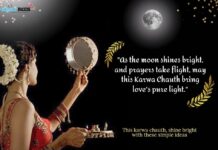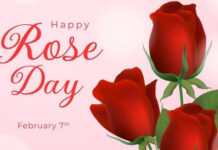As winter bids farewell and the air in the northern regions of India turns crisp, the anticipation for Lohri, a festival of warmth and togetherness, begins to fill the hearts of the people. Lohri is celebrated on 13 January every year with much fervor, marks the end of winter and the beginning of longer, sunlit days. In 2024, let’s delve into the heartwarming traditions, the mesmerizing bonfires, and the delectable sweet treats that make Lohri a celebration like no other.
Table of Contents
Lohri Traditions: A Glimpse into Cultural Heritage
Lohri, more than just a festival, is a celebration of cultural heritage and agricultural traditions passed down through the ages. Families eagerly await the auspicious day to participate in time-honored customs that connect them to the roots of their community.
Lighting the Bonfire: A Circle of Unity
At the heart of Lohri celebrations is the lighting of the bonfire, known as “Lohri diya.” This tradition symbolizes the triumph of light over darkness and marks the end of the winter solstice. Families and communities gather in open spaces, creating a circle around the bonfire. The flames dance to the beats of traditional folk songs, and the warmth generated becomes a source of both physical comfort and communal joy.
As the bonfire crackles, families offer prayers for prosperity and the well-being of their loved ones. It is a time when the community comes together, transcending individual differences, to celebrate the cyclical nature of life and the shared hope for a bountiful harvest in the coming season.
Sweet Treats: A Symphony of Flavors and Generosity
No festive celebration is complete without an array of delightful treats, and Lohri is no exception. The festival brings forth a delightful assortment of sweet treats that not only satiate the taste buds but also symbolize the sweetness of bonds shared among friends and family.
Gur and Til Ladoo: Sweetness in Simplicity
Gur (jaggery) and til (sesame seeds) ladoos are an integral part of Lohri’s sweet repertoire. Crafted with simplicity and love, these sweet delights represent the richness and warmth of the harvest season. As families exchange these treats, they share not just food but also the sweetness of goodwill and camaraderie.
Pinni: A Nutty Affair
Pinni, a sweet made from flour, ghee, and jaggery, holds a special place in Lohri celebrations. Families exchange these nutty and wholesome treats as a gesture of love and blessings. The nutty flavor of pinni adds a traditional touch to the festive spread, creating a delightful symphony of flavors.
Revadi and Gajak: Crunchy Bliss
Crunchy and flavorful, revadi and gajak, made from sesame seeds and jaggery or sugar, find their place on the Lohri platter. These treats not only add a crispy texture to the sweet offerings but also showcase the diverse culinary heritage associated with Lohri celebrations. The nutty and sweet combination is a hit among both young and old, making it a must-have during the festivities.
Dance, Music, and Joyful Revelry: A Festive Symphony
Lohri is a celebration of life, and what better way to express joy than through dance and music? Traditional Bhangra and Gidda dances take center stage, turning the celebration into a lively spectacle that embodies the spirit of Punjab.
Beats of the Dhol: The Heartbeat of Lohri
The rhythmic beats of the dhol echo through the air, setting the tone for energetic and spirited dance performances. From the young to the old, everyone joins in, creating a vibrant and colorful mosaic of movement and joy. The infectious rhythm brings communities together, fostering a sense of belonging and shared celebration.
Lively Dance Performances: Bhangra and Gidda
The traditional Bhangra and Gidda dances add a cultural flair to the festivities. Dressed in traditional attire, men and women come together to showcase the rich dance heritage of Punjab. The vibrant twirls, energetic footwork, and joyous expressions infuse the celebration with a sense of cultural pride and identity.
Symbolism and Cultural Significance: Harvesting Blessings
Beyond the bonfires and sweet treats, Lohri is a tapestry woven with threads of symbolism and cultural significance. Each element of the celebration carries a deeper meaning, reflecting the agricultural roots and the cyclical nature of life.
Bonfire as a Symbol of Light: Triumph Over Darkness
The lighting of the bonfire symbolizes the victory of light over darkness, of hope over despair. As families gather around the flames, they offer prayers for prosperity and seek blessings for a fruitful harvest. The bonfire becomes a beacon of positivity, guiding communities towards a brighter and more abundant future.
Circle of Togetherness: Celebrating Unity
The act of circling the bonfire is symbolic of the cyclical nature of life. It represents the continuous cycle of seasons, harvests, and celebrations. As families come together to form this circle, they not only celebrate the changing seasons but also the unbreakable bonds of kinship and community.
Looking Ahead: Lohri 2024 and Beyond
As we embrace Lohri in 2024, let us revel in the traditions that bind us, the bonfires that warm our hearts, and the sweet treats that sweeten our lives. Lohri is more than a festival; it is a celebration of life, love, and shared experiences that make us a vibrant and diverse community.
In the glow of the Lohri bonfire, as we exchange sweets and dance to the beats of the dhol, let us carry forward the spirit of unity and joy. May the traditions of Lohri continue to illuminate our lives, bringing warmth and prosperity to each and every home. Happy Lohri!


































